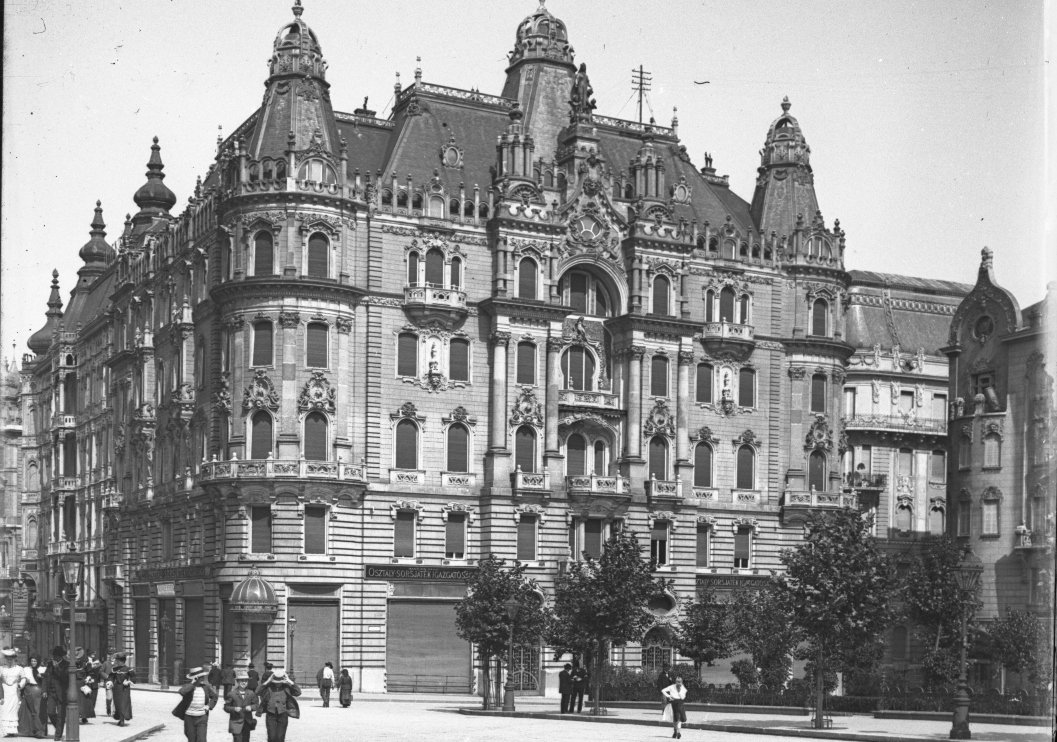 The „intertwined history” of the bridges and the city of Budapest
Which ideas and events have shaped the fate of bridges of Budapest and the cityscape? Alongside many other interesting facts, this question is also answered this newly published book by the Budapest City Archives, which introduces the history of bridges in Budapest.
The „intertwined history” of the bridges and the city of Budapest
Which ideas and events have shaped the fate of bridges of Budapest and the cityscape? Alongside many other interesting facts, this question is also answered this newly published book by the Budapest City Archives, which introduces the history of bridges in Budapest.
empire
 There was once a theatre in the Class Lottery Palace - The history of the theatre began 105 years ago on Eskü Square
There was once a theatre in the Class Lottery Palace - The history of the theatre began 105 years ago on Eskü Square
February 12, 2023 at 9:00 AM
Where cars turn down today from the Erzsébet Bridge to the Pest embankment, before World War II, there stood a huge and beautiful building: the Class Lottery Palace. It was built at the turn of the century in the Neo-Baroque style, but Art Nouveau also left its mark on it. However, its interior was remodelled several times, most significantly for Vilma Medgyaszay's theatre. Jenő Lechner made its classicist plans in February 1918, exactly 105 years ago.
Interior transformation of the National Museum - The building was also expanded with a hidden floor
July 29, 2022 at 9:00 AM
The Hungarian National Museum is one of the iconic buildings of our country, so since it was handed over in 1847, attention has been paid to its condition. By the beginning of the 20th century, however, its collection had already grown to such an extent that excessive crowding made its operation impossible. Some of the preserved material was transported to other buildings, and then in 1926, its large-scale restoration began, during which a hidden, third floor was also created in 1927 - ninety-five years ago.
Art inside the centuries-old walls - the little-known side of the University Church
July 17, 2022 at 9:00 AM
The walls of the University Church have been standing tall in the inner city of Pest for 280 years: the construction of one of the jewels of Hungarian Baroque architecture was finished in 1742, after nearly twenty years. However, this did not mean its completion, as the interior was still completely unadorned at that time. It got its worthy face surprisingly late, only in the middle of the 19th century, which was supplemented with additional details at the beginning of the 20th century- so the church we know today was formed then.
One of the largest churches in Budapest was consecrated ninety years ago
October 8, 2021 at 9:00 AM
The Church of Our Lady of Hungary in Rezső Square, consecrated on 8 October 1931, became the second largest church in the capital after St. Stephen's Basilica. Although it has since been toppled from this eminent place, it is still at the forefront to this day. However, not only is its size commanding authority, but also the long and tacit history of its construction.
More articles
 The „intertwined history” of the bridges and the city of Budapest
Which ideas and events have shaped the fate of bridges of Budapest and the cityscape? Alongside many other interesting facts, this question is also answered this newly published book by the Budapest City Archives, which introduces the history of bridges in Budapest.
The „intertwined history” of the bridges and the city of Budapest
Which ideas and events have shaped the fate of bridges of Budapest and the cityscape? Alongside many other interesting facts, this question is also answered this newly published book by the Budapest City Archives, which introduces the history of bridges in Budapest.
 The Bridge Report, which brought a turning point in the history of Budapest
A travel report that changed the history of Pest and Buda, as well as Hungary. The little book contributed to the change of half a thousand years of legal customs and the implementation of an investment of unprecedented size and technical quality. This book was The Bridge Report [Hídjelentés in Hungarian].
The Bridge Report, which brought a turning point in the history of Budapest
A travel report that changed the history of Pest and Buda, as well as Hungary. The little book contributed to the change of half a thousand years of legal customs and the implementation of an investment of unprecedented size and technical quality. This book was The Bridge Report [Hídjelentés in Hungarian].
 Drama on the university wall - The heroic monument was planned 95 years ago
In the constant hustle and bustle of the Egyetem Square in Pest, the students may not even notice the monument that decorates the short section of wall between the church and the central building of ELTE. However, it commemorates their predecessors, the heroes who fought for their country in World War I, and those who heroically helped them. The first design of the dramatically collapsing soldier was born in 1928, ninety-five years ago.
Drama on the university wall - The heroic monument was planned 95 years ago
In the constant hustle and bustle of the Egyetem Square in Pest, the students may not even notice the monument that decorates the short section of wall between the church and the central building of ELTE. However, it commemorates their predecessors, the heroes who fought for their country in World War I, and those who heroically helped them. The first design of the dramatically collapsing soldier was born in 1928, ninety-five years ago.



